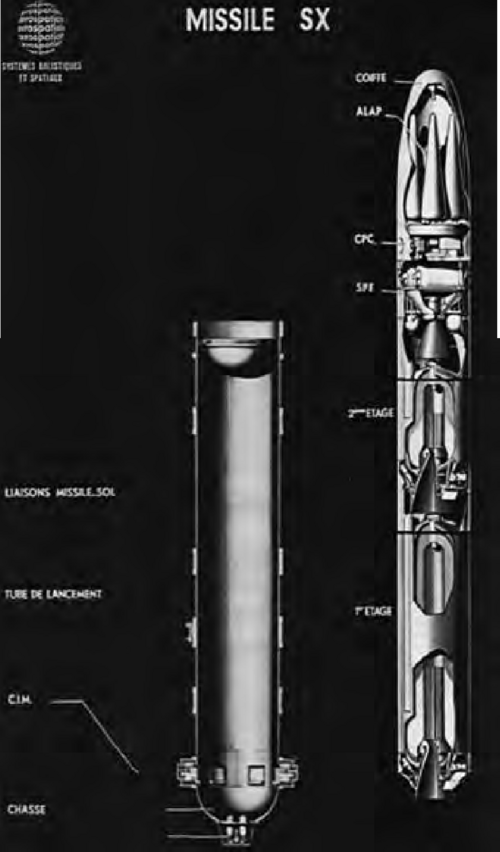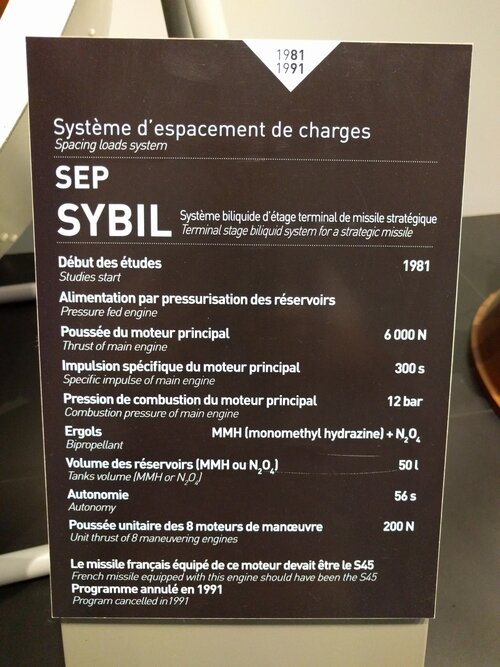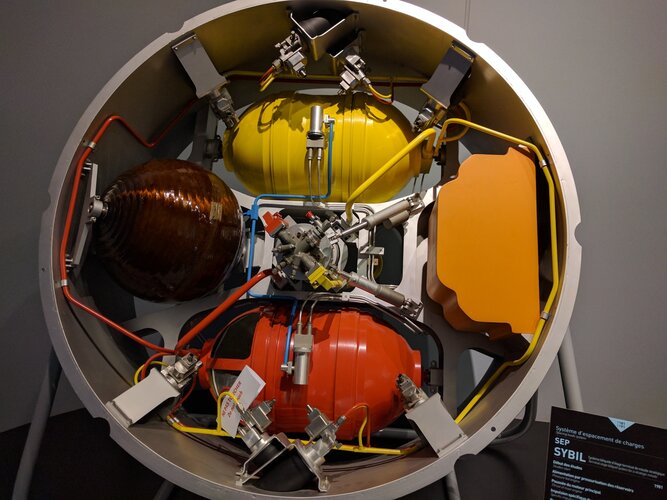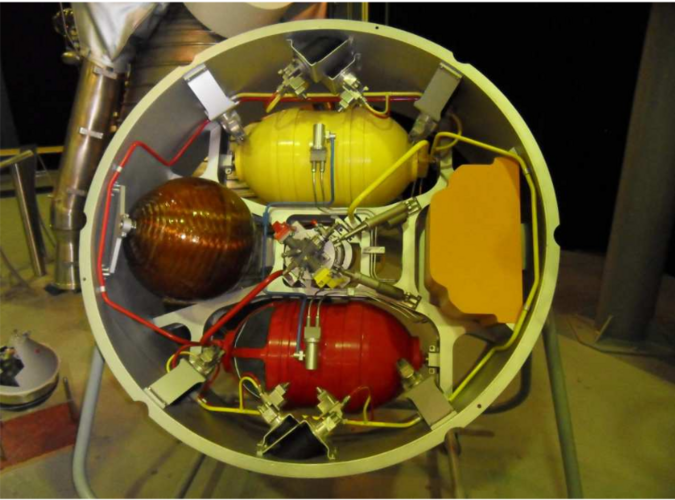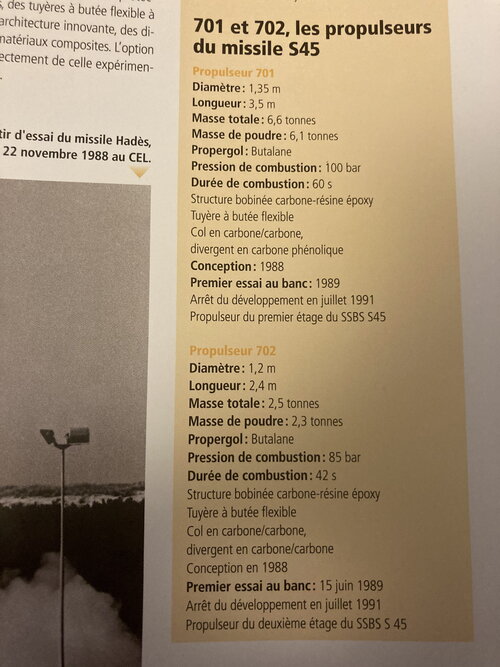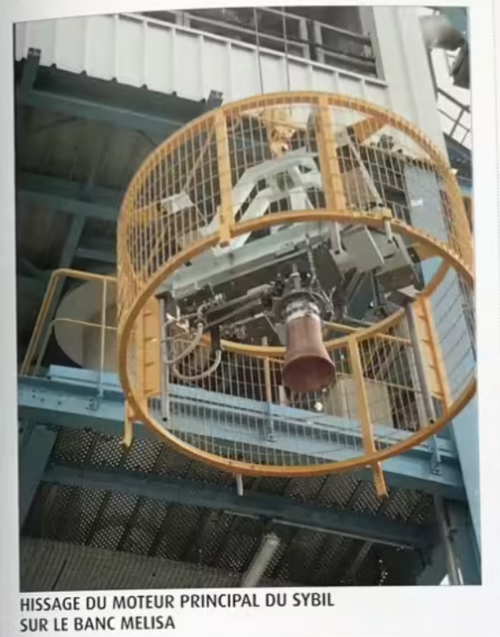During this time, under the authority of François Calaque, preliminary studies began on the successor to the SSBS S3 called SX (small 10/11t missile), where different types of deployment were evaluated, as the silos became more vulnerable to increasingly precise first strikes. Two possible solutions: harden a fixed system or make it mobile to avoid being vulnerable to a first strike. In 1983, I took responsibility for phase A/B of the development of the new SX strategic missile; among the different modes of deployment, the mobile system seemed to be the most effective, a 38-ton semi-trailer vehicle that was stationed on air bases and deployed in times of crisis, the missile was tri-loaded. Too much erroneous and caricatural information
circulated about this type of deployment, which was studied closely with the Air Force.
Then this program will follow the French political alternations political changes in France, with periods of slowing slowing down and accelerating.
In 1984, the programme was slowed down; I then took over the management of the entire programme for this new weapon system, and we continued to study both the missile and the deployment of this weapon system with the various operational constraints, such as transmissions, protection and, of course, security... Work with the DGA, but also the Air Force.
In 1986 (cohabitation) the program was launched and took the name S4; the missile became a single-charge missile and was deployed on a VTL 1, a true autonomous semi-trailer, but also in a second phase, in silo. To better understand these decisions, it is necessary to compare the international political events of the time, and in particular the East-West balance on antiballistic defences with the SALT agreements.
On the industrial side, development of the first and second stage boosters (701 and 702) and the biliquid propulsion system (SYBIL) was launched (the upper stage, the model of which is still on display in the Snecma museum in Villaroche). In November 1987, the first 15-month tranche of the development contract was signed for 1 billion francs. In 1988, political changeover and, at the end of the year, a new delay, it takes six months to review the budgets and governmental defense priorities.
The mobile system and the VTL (Véhicule de transport et de lancement) were stopped - a prototype vehicle had been developed and had begun its trials with the Air Force - deployment would only be in silos; the Albion plateau had to be reviewed and modernized, in particular to make it invulnerable to a non-nuclear attack, which was not a matter of course.
I was then entrusted with all the SSBS programs, development of the S4 and maintenance of the S3 weapon system. It should be remembered that Aerospatiale was the industrial prime contractor for the entire program, and as such had a very important role to play with the DGA and the French Air Force in maintaining the entire system in operational condition:
PCT2 Transmissions, ZL3 , missile etc. Two teams, one at Mureaux and the other at Apt on the St-Christol air base, ensured all the activities of the force's operational maintenance on behalf of the DGA and the Air Force.
In 1989, the S4 became the S45 by integrating penetration aids of the M45 class, which is currently being developed, with a new high part and thus a very superior penetration of adversary defences. The development of the S45 missile continued with the first bench firing of the 701 (1990) and 702 (1989) propellants of the two powder stages, as well as the SYBIL engines. In 1990, the programme was again spread out with reduced funding, and in December a Defence Council was held to decide on the continuation of the programme
But for us, industrialists, on July 12, 1991, we receive the notification of the DEn of the cancellation of the contract and thus, the stop of the program. My deputy Gérard Bréard will take charge of it.
With the benefit of hindsight, this was probably the right decision - 1989 was the fall of the Berlin Wall. For the manufacturer, of course, it's a different matter, with teams to be reassigned and loads lost, but overall, it won't pose an insurmountable problem.

